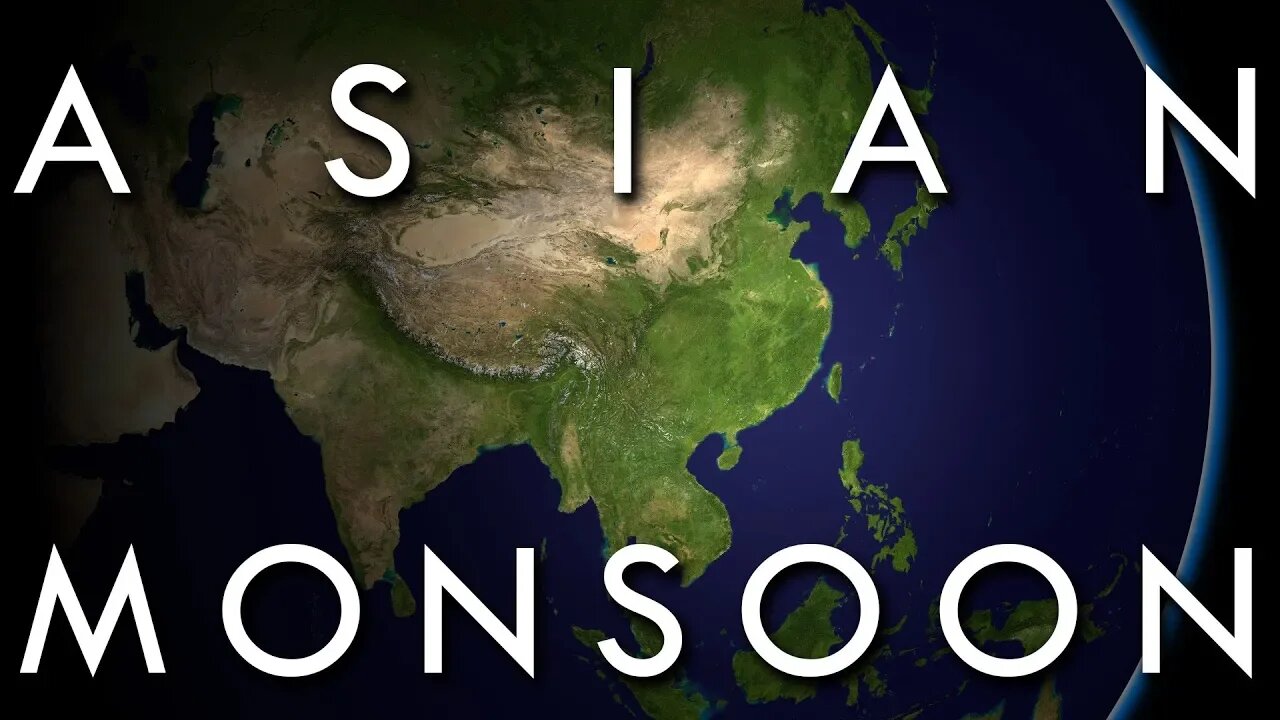Premium Only Content

The Asian Monsoon - The World's Largest Weather System
The Asian Monsoon - the world’s largest weather system. Affecting almost half of the world’s population, from the blistering heat of India, to the frigid north of Siberia. In this video we look at the dynamics that great the great change in winds every season, and show real places in Asia which are affected by this.
🌬☔️🌬☀️
🕐CHAPTERS🕖
👉0:00 Opening montage
👉0:55 Introduction and titles
👉2:07 Definition
👉2:31 Asian monsoon vs other monsoons
👉3:46 Indian vs East Asian monsoons
👉4:24 Underlying dynamics
👉6:19 Koppen climate zones
👉7:23 Winter
👉8:00 Effect of Australia and oceans
👉8:44 Arabia
👉9:26 Indian summer
👉10:31 Wettest places in the world
👉11:23 Himalayas & Indian winter
👉12:08 Reversal of ocean currents
👉12:40 SE Asia
👉12:58 China
👉13:35 Korea and Japan
👉14:33 Typhoons
👉14:50 Siberia
👉15:25 Annual variability
👉16:07 Outro
Dry winters and wet summers define the Asian Monsoon, from India, Nepal and Bangladesh, through Vietnam, China, Hong Kong and Taiwan to Korea, Japan, Mongolia and Siberian Russia in the north. This is the only part of the world where such wet and dry seasons exist outside the tropics.
The dynamics that drive the Indian Monsoon and the East Asian Monsoon is the seasonal movement of the ITCZ (Intertropical Convergence Zone) back and forth. In India, the summertime produces the Southwest Monsoon blows in from the Indian Ocean bringing heavy rain, while in winter, the Northeast Monsoon prevails, bringing dry cool winds from the Himalayas.
The Indian Monsoon produces the wettest places on earth with Mawsynram and Cherrapunji in Meghalaya State, India, both experiencing more than 12 meters of rain per year.
The East Asian Monsoon produces the snowiest places on earth, along the NW coast of Japan when Siberian winds blow across the Sea of Japan in winter, collecting frigid moisture that is then dumped on cities like Sapporo in Hokkaido.
The Asian Monsoon has a dramatic effect on the climate of India, the climate of Japan, the climate of Korea and the climate of China. The Climate of Northern Australia is also affected, being opposite to the continent of Asia in regard to the Asian Monsoon.
This in-depth study of the Asian Monsoon is essential preparation for the IAS Exam and UPSC Exams of the Indian Civil Service.
Additional charts, maps and images along with the narrative script - click here:
👉https://geodiode.com/climate/asian-monsoon
- -
📷📹🎥 VIDEO & PHOTO CREDITS ❤️❤️❤️
👉https://geodiode.com/climate/asian-monsoon#credits
- -
Please support the development of this channel by remembering to 👍 Like, 🔁 Share and 🔴 Subscribe.
You can also support the production of series like this by becoming a monthly sponsor with Patreon for as little as $2/month 👉 https://patreon.com/geodiode 🥰
Spanish CC Translation: Richard Torres
Narrated, Written and Produced by
B.J.Ranson
You can contact me via the website at 👉 https://geodiode.com/contact
Or you can send an email via this Youtube Channel page 👉 https://www.youtube.com/channel/UC1raaXFgsFBSFR8qNgchF2g/about
-
 26:56
26:56
Geodiode - Exploring Our World Through Video
2 years ago $0.05 earnedThe History of Scotland
7651 -
 1:15:17
1:15:17
Sean Unpaved
4 hours agoPlayoff Implications On The Line For Cowboys vs. Lions NFC SHOWDOWN! | UNPAVED
53.6K -
 59:30
59:30
Simply Bitcoin
23 hours ago $0.75 earnedThe Bitcoin Crucible w/ Alex Stanczyk & Daniel Batten - Episode 11
36.9K3 -
 8:44
8:44
Jamesons Travels
18 hours ago $1.87 earnedCongress Created This Mess…Now Troops Pay the Price
34.8K19 -
 1:00:13
1:00:13
Timcast
5 hours agoTrump DUNKS On Somalis, Calls For Ilhan Omar To Be DEPORTED
183K55 -
 2:30:27
2:30:27
Steven Crowder
7 hours agoNick Fuentes Sits Down with Crowder
593K1.78K -
 1:07:12
1:07:12
The Rubin Report
6 hours agoHost Gets Visibly Angry as Scott Bessent Rips Him to Shreds in Front of NY Times Crowd
80.1K43 -
 4:42
4:42
Buddy Brown
6 hours ago $1.24 earnedThe Most GHETTO Chick-fil-A Customer EVER! | Buddy Brown
20.2K14 -
 1:11:14
1:11:14
iCkEdMeL
5 hours ago $2.86 earned🔴 BREAKING: Brian Cole Identified as DC Pipe Bomb Suspect — FBI Arrest
35.7K11 -
 LIVE
LIVE
LFA TV
18 hours agoLIVE & BREAKING NEWS! | THURSDAY 12/04/25
1,229 watching